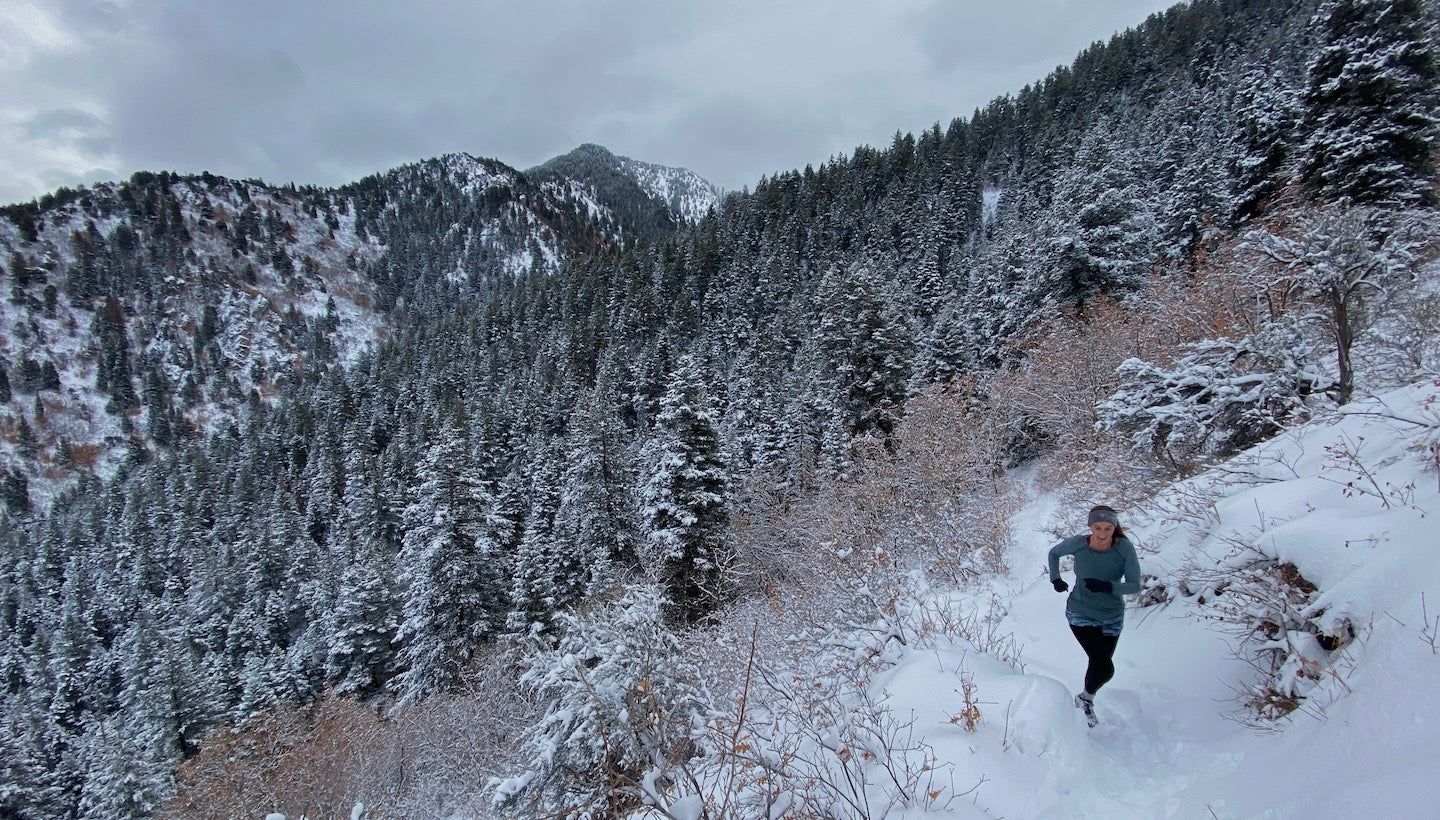Your Cart is Empty
Free Domestic Shipping Over $50 | 30 Day Returns

By Katie Kommer
I often joke that “because I know the rules, I get to break them”. Oftentimes, when trail running locally or going for micro-adventures I throw all my layering rules I’ve carefully crafted to the wind. Yes, the consequences of poor clothing choices are lessened when you’re in service and know exactly where you’re going. However, waist deep post-holing in a lightweight pair of running shorts, a cotton crew neck, and thin liner gloves is still extremely unpleasant even if it’s at your local trail system.


Though you can often catch me jogging around in my favorite hoodie, when prepping for longer adventures or approaching high alpine environments I do take my layering extremely seriously. I’ve had plenty of experience with being both over and under-dressed, and have grown to thoroughly appreciate the art of a good clothing system. Furthermore, proper attire can save you from gnarly sunburns, poison oak, and even bug bites. The purpose of this post is to talk about why layering works, what materials are best suited for different environments, and how I personally layer for different levels of activities. Finally, I’ll mention a few tips specifically for sleeping warm in the backcountry.
While the perfect layering system may seem elusive, it is based on science. Combining high quality wool or synthetics with lightweight fleece and insulation all works together to trap your body heat and keep you warm, while moving sweat away from your body.
Baselayers
The two most popular base layers for outdoor activities are wool and synthetic. Merino wool is extremely popular amongst thru-hikers and backpackers due to its odor resistant qualities. Furthermore, it does a great job of wicking moisture away from the body, keeping you warm and dry. On the other hand, synthetic or blended base layers can have different properties like stretchiness or an inner fleece brush, and tend to be less expensive than merino wool.
Midlayers
Fleece is a great midlayer material. For high output activities like backpacking, a micro-grid fleece does a great job of wicking moisture and is lightweight enough to carry. On the other hand, for car camping or mellow hiking a heavier fleece can sometimes be appropriate if the main priority is trapping as much heat as possible.

Insulating Layers
For ultralight backpacking, a high quality down puffy is your best option. They’re typically much lighter and more packable than synthetic puffies, depending on the fill power and type of down used. However, synthetic options do tend to be cheaper and do a better job of retaining loft in wet conditions.

Shell / Waterproof Layer
Depending on what type of conditions you’re likely to face, the type of shell you choose is extremely important. For fairly warm yet windy conditions, something as light as the Patagonia Houdini can help. However, for snowy, extremely windy, wet, or any mixture of the above conditions you’ll want a heavier, fully waterproof shell. Many companies use Gore-Tex waterproofing, or their own in-house technology. Pro tip: If buying second-hand, re-waterproof your shell jacket with NikWax.

When you’re expending a ton of energy and sweating a lot, layering can be very tricky. I tend to want as little clothing as possible. However, it is still very important to have high quality clothing to wick moisture away as you sweat, and an extra layer to put on in case the weather turns. “High output activities” are anything that get your heart rate high and sustained. For me, activities that fall into this category are trail running, light and fast hiking, backcountry skiing, and intense biking. Typically, for these activities I’m as concerned with getting too warm as I am too cold. It can be tricky to dress appropriately and have adequate layers while still being able to move fast and light. Here’s how I layer by season for this level of activity:
Summer (60+ degrees)
Spring/Fall (40 - 60 degrees)
Winter (40- degrees)


When I’m not working quite as hard physically, I love to have an extra layer or two for comfort. “Medium output” activities are what I consider to be more casual, typically done with friends and at a slower pace. However, I am still expecting to work my heart rate a bit and am in danger of sweating too much if I don’t dress appropriately. For me, activities that fall into this category are slower paced hiking, biking around the city, snowshoeing, etc. In the context of ultralight backpacking, these would be the flat and downhill sections of trail, where I’m moving at a very conversational pace. In this category I’m probably stopping to add or remove a layer more often, and very conscious of staying comfortable and keeping my system breathable and dry.
Summer
Spring/Fall
Winter

For this category of activity, staying warm and cozy is the biggest priority. However, oftentimes it’s tempting to bundle up with whatever you have on hand and you can end up overheating and sweating through low quality layers. Or, you forget a crucial piece of equipment and end up shivering all day. For me, common activities in this category are leisurely walking or hiking, car camping, picnic games, etc.
Summer
Spring/Fall
Winter

A warm yet lightweight sleep system is arguably the most important piece of an ultralight backpacking kit. While a high quality down quilt is a great start towards sleeping warm, there are a handful of extra pro tips for staying cozy at night on long backpacking trips.
[Want more tips/tricks for getting the most from your sleep system? Check out Trey’s post about this very topic!]
